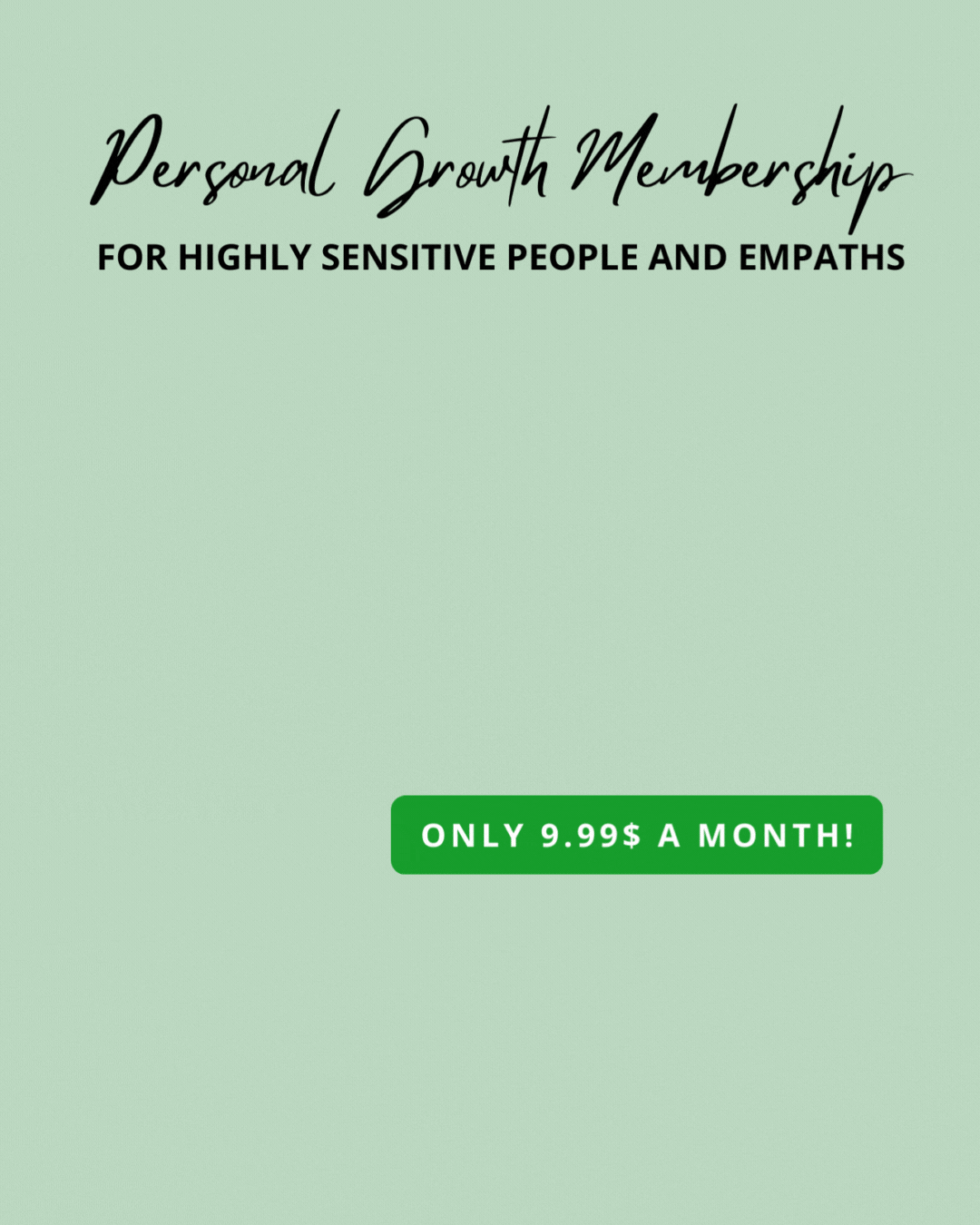15-20% are highly sensitive, but did you know that there are different types of highly sensitive people? This blogs explains the five types of HSP’s.
Estimated reading time: 7 minutes
Being highly sensitive means that you are more sensitive when it comes to external and internal stimulation. By now, you most likely have figured out that you are highly sensitive. You know that you need to take well care of your body and that you should recharge your energy before feeling completely drained by your surroundings. Approximately, you also have gained more knowledge of your trait and identified with many of the characteristics of a highly sensitive person.
When I found out that I am highly sensitive, I could not read enough about the trait. I wanted to gain as much knowledge as possible about highly sensitive people. In this way, I could find my inner strengths and understand my weaknesses and work on my personal development. Yet, I felt that I missed a piece of knowledge. A while ago, I came across this theory about HSP types on a Dutch blog by HSP-coach Saskia Klaaysen. As an HSP-coach, she helps other highly sensitive people with discovering and living with their trait. Also, she writes about interesting theories, including this one below.
Here’s What You’ll Discover:
HSP And HSS
Dr. Elaine Aron earlier established that 30% of the highly sensitive people are extrovert types, and 70% are introvert types. In addition, Dr. Aron mentions the term High Sensation Seekers (HSS) on her website, who are people who go into action-mode as soon as they are triggered by something interesting, hear something intriguing or feel something special.
On a side note: In her book ‘The Highly Sensitive Person: How to Thrive When the World Overwhelms You’, Dr. Elaine Aron deep dives into the HSP trait and describes how you as a highly sensitive person can thrive in life.
Saskia Klaaysen stated on her blog that approximately 30% of highly sensitive people are so-called ‘high sensation seekers’. However, she mentions that it is a common misconception that all of these 30% high sensation seekers must be extroverts. Accordingly, she distinguished four types of highly sensitive people: The introvert HSP, the extrovert HSP, the introvert HSP/HSS and the extrovert HSP/HSS. However, we would like to add a fifth type to this mix; the ambiverted HSP.
The Five Types Of Highly Sensitive People
These are the five types of highly sensitive people:
The Introverted HSP
Are you that kind of person that cannot wait to come home, put on your sweatpants, make a warm cup of tea and snuggle under your blanket? Netflix & chill or reading a book are your favorite activities? Do you prefer to do the above mentioned most of your time? Then you might be an introvert highly sensitive person.

An introvert highly sensitive person is somebody who prefers to do things on their own or only with few people around them. The are people that love structure and routine, and do not mind being alone over a longer amount. They enjoy their own company just as much, or even more, than the company of others. An introvert HSP likes to think about the big questions in life, deal with their emotions and they are full of ideas.
According to Saskia Klaaysen, a common danger for becoming overwhelmed is when an introvert HSP is amongst more people than he or she is comfortable with. As a result, they might be overstimulated by all the emotions, activities and thoughts of the others.
The Extroverted HSP
You want the best of both worlds! On the one hand, you want to be around people and don’t mind being in big groups. Yet, you also love the peace and calm of coming home and doing absolutely nothing! It might feel as if you are in constant war with your desires. The social and fun you vs. the structured, peaceful and calm you. It is a challenge that many extrovert highly sensitive people are dealing with.
Saskia Klaaysen states that it is important for this type to be aware of their personal needs and boundaries, as the risk of becoming overwhelmed is great due to overstimulation by interaction with big groups of people. The best is, to find a balance between these two. It might help to tell people in your close surroundings that you are highly sensitive, so that they understand why you sometimes might choose to not join a gathering or go home a bit earlier than the rest.
The Introverted HSP & HSS
As an introvert highly sensitive person AND high sensation seeker, you love to try no activities and to live a life full of variety and new experiences. However, you do not necessarily feel the need to do these things in a big social context. You prefer doing those activities on your own or only with one or two friends. These activities, you most likely discover out of own motivation, due to your need to have strong emotional experiences.
On her blog, Saskia Klaaysen mentions that the biggest challenge for an introvert HSP & HSS is that it can be challenging to find the balance between under-excitation due to few new experiences and being overwhelmed due to too much activities and over-stimulation. Tuning into your energy and understanding your boundaries is of high importance for each highly sensitive person, but especially for those who also are high sensation seekers.
The Extroverted HSP & HSS
You keep seeing people, trying new things and enjoy to live life to its fullest, until one day you are completely worn out because you neglected the signals of your body. As an extrovert highly sensitive person and high sensation seeker, you love to be busy and you have an active social life. Therefore, you sometimes have the tendency to overlook your boundaries and suddenly you feel drained of energy.
This is according to Saskia also one of the biggest risks of being an extrovert HSP & HSS. You can be overwhelmed because of too many experiences, and therefore it is important to take your time to recharge your energy. Set boundaries for yourself and communicate them well with your surroundings, so that they understand. Take your time for yourself when you feel overwhelmed and exhausted. There is nothing wrong with that!
If you identify as an extroverted or introverted HSP/HSS, you may want to have a look at the book ‘Thrill: The High Sensation Seeking Highly Sensitive Person’.
The Ambiverted HSP
One of our readers kindly notified us that there may in fact be a fifth type of highly sensitive person; the ambiverted highly sensitive person. Although Dr. Elaine Aron does not mention this type of HSP in her book ‘The Highly Sensitive Person’, one might argue that some highly sensitive people do not identify solely as pure introverts or pure extroverts.
These highly sensitive people fall into the category ‘ambiverts’. According to Oxford Dictionaries, an ambivert is “a person who has a balance of extrovert and introvert features in their personality.” As an ambivert, you might enjoy socializing with others and not feel like it drains you. At the same time, you also need regular moments of solitude to feel recharged.
Finding the right balance is the key to being a happy ambiverted HSP. Make sure to schedule moments of socializing AND moments for yourself to recharge.
How This Theory Helped Me
This theory has helped me to identify my needs in relation to my high sensitivity and personality. Being an ambiverted HSP, I found it challenging to know how to set boundaries when it comes to taking time for myself. Knowing about this theory, helped me to understand my challenges in relation to my trait. I hope that you get just as much out of this theory as I did.
I am curious to hear which types you are! If you do not know for sure if you are a high sensation seeker, you can take this test on Dr. Elaine Aron’s website. It might help you to identify which type you are.
You May Also Enjoy Reading These Articles








